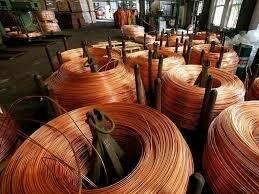LONDON: Industrial metals prices fell on the London Metal Exchange (LME) on Monday, with copper hitting a four-week low, pressured by worries that US import tariffs would curb economic growth and demand. Benchmark LME copper was down 0.7% at $8,985 a metric ton in official open-outcry trading after touching its lowest since Jan. 6 at $8,914.50.
US President Donald Trump’s plan to impose 25% tariffs on Canada and Mexico and 10% tariffs on China – the United States’ three largest trading partners – from Tuesday is widely expected to slow global economic growth and demand. “We think any implementation of proposals for a universal US import tariff, higher tariffs on China, as well as expected retaliatory tariffs from targeted countries will further escalate trade tensions and global growth headwinds,” Citi analysts said in a note.
US companies will look to the Middle East and India for metal as they seek to circumvent sweeping tariffs, industry sources said. Levies on shipments to the United States will also fuel higher prices, seen in copper on the US COMEX exchange trading at a premium to the LME. COMEX copper slipped 0.4% to 4.261 cents a lb, or $9,394 a ton, representing a premium of $479 over the LME price.
Elsewhere, large holdings of aluminium warrants and futures contracts and falling inventories in LME-registered warehouses are fuelling concerns about tight supplies.
The discount for the cash contract over three-month aluminium was about $2 a ton on Friday, down from more than $40 in December. Meanwhile, the premium for the March LME contract over three-month aluminium is about $13 a ton, up from $1 at the start of January. LME aluminium stocks have nearly halved to 587,200 tons since May last year.
Three-month aluminium was down 0.6% at $2,579 a ton, lead ceded 0.3% to $1,944, tin retreated 1.2% to $29,750, nickel was down 0.7% at $15,110 and zinc added 0.1% to $2,745.
Also weighing on industrial metals was the stronger US currency, making dollar-priced commodities more expensive for buyers holding other currencies. Another negative was weaker data from purchasing managers at manufacturers in top consumer China.

Source: Brecorder

























